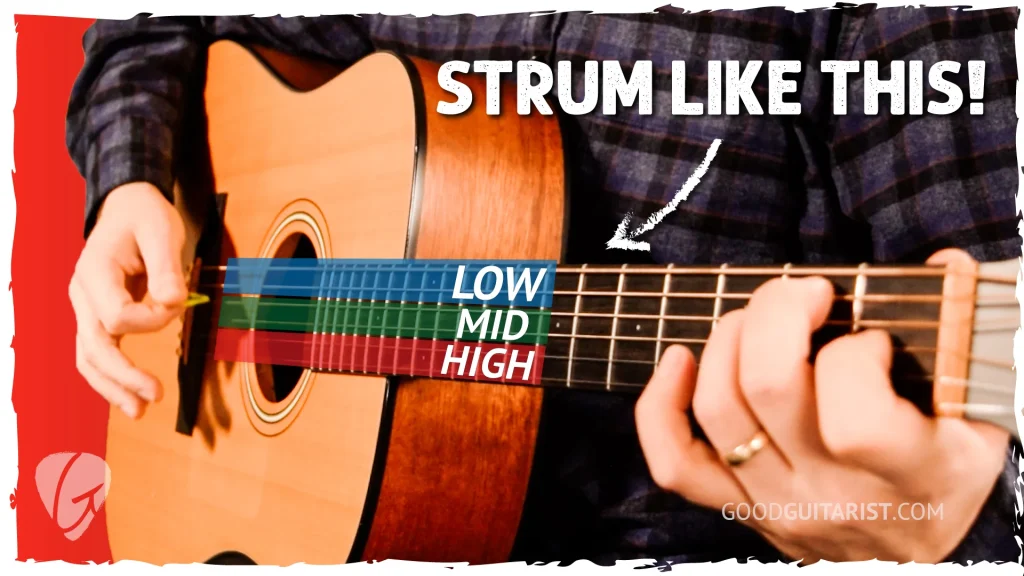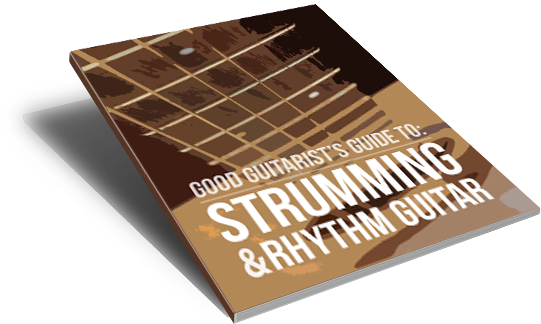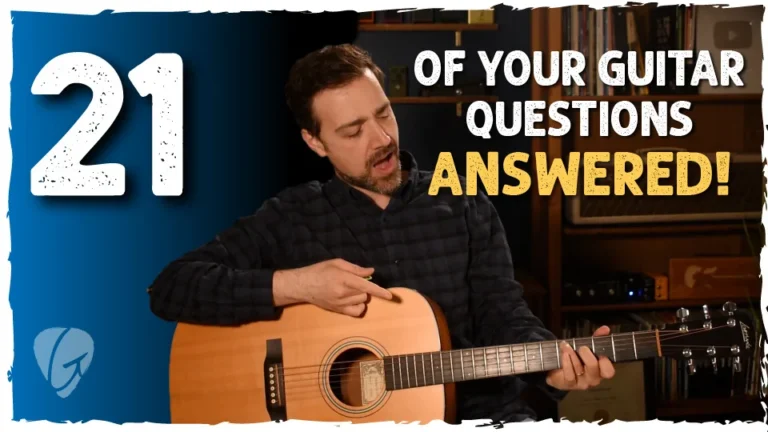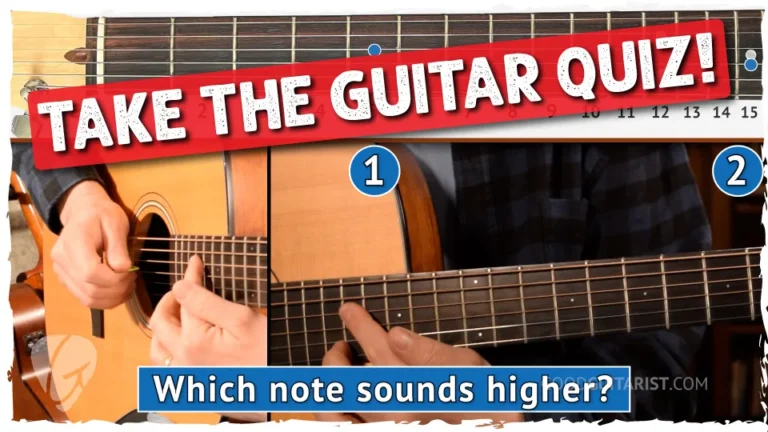How to Add Expression to Your Guitar Strumming
Learn two simple, powerful techniques to make your strumming sound more expressive and musical. Perfect for guitar players ready to move beyond the basics.
If you’re already confident with a few strumming patterns and you’re ready to make your playing sound more musical, this lesson is for you. I’m going to share two strategies that’ll help you instantly add expression to your guitar strumming. These aren’t gimmicks – they’re practical tools that you can start using right away.
But before we dive in, just a quick heads-up: if you’re still working on your basic strumming technique, timing, or getting your patterns to sound like the song, I’ve got other lessons to help with that foundation. You’ll find them in my free ebook below. It’s super important to build that solid base first.
1. Use the Guitar’s Range: Strumming in Zones
Most people don’t think of the guitar as a wide-range instrument, but it really is. It goes low like a cello, high like a flute, and everything in between. And we can use that range to create more expressive strumming.
We’ll keep the strumming pattern super simple for this exercise:
Down, Down, Down-Up, Down-Up
D D D u D u
1 + 2 + 3 + 4 +
L M H H H H- Beat 1: Strum just the lower (bass) strings (L)
- Beat 2: Aim for the middle strings (M)
- Beats 3 & 4: Strum the higher strings (H)
This layering technique creates contrast and texture. You’re still keeping your arm moving consistently (down on the beat, up on the “and”) but now you’re controlling how much you strum, and which strings you hit.
Why This Matters
Once you can reliably aim your strums at different string zones, you can take any pattern you already know and add a whole new dimension to it. For example:
- Emphasize low strings for a strong beat
- Lightly strum high strings for a delicate finish
- Play around with chord shapes like D that naturally emphasize higher strings
Instead of memorizing one exact strumming formula for every song, you’ll start feeling where to go based on the vibe of the music.
2. Say It With Feeling: Vocalize Your Strumming
This second method is even easier. You don’t need your guitar for this one – you just need your voice.
Try saying your strumming pattern out loud with expression:
“Down… DOWN… down-up, down-up”
See how I added emphasis on the second beat? That’s the backbeat, and it’s what gives many songs their groove.
Now say it again and exaggerate the feeling. Then, once you’ve got that expressive vocal groove, try to match it with your strumming.
This is one of the simplest and most effective ways to make your strumming sound musical instead of robotic. It connects your ears, your body, and your guitar.
Bonus Tip
You can combine this with the previous technique: say your pattern expressively and use the string zones to match that vibe.
For example:
- Emphasize beat 2 by strumming all the strings a little harder
- Soften up on beats 3 and 4 by only hitting the middle or upper strings, and maybe holding the pick a little looser for a gentler sound
Why This Works (and Why It Matters)
At first, we learn strumming patterns to give ourselves a starting point. But listen to any professional recording and you’ll notice they’re not playing the same exact pattern over and over. What they are doing is locking into the feel of the song.
By practicing these expressive techniques, you’ll move beyond rigid strumming and start developing your own sense of rhythm and groove.
That’s what makes your playing sound natural. That’s what makes people tap their feet when you strum.
Want to Go Even Deeper?
If this resonated with you and you’re ready to level up your strumming, I have a course called Strumming Made Simple that goes way beyond what I could fit in this lesson.
You’ll learn:
- How to break down and create your own patterns
- How to recognize patterns by ear
- How to match your strumming to the feel of any song
- All in a simple, step-by-step format
👉 Check it out here – it’s all included in the Premium Membership
Thanks so much for joining me today! I hope these tips help you add expression to your guitar strumming.
Happy strumming!
-James
All-Access Pass
Start your 10-day FREE trial
- Step-By-Step Courses
- Exclusive YouTube Bonuses
- Q&A with James






